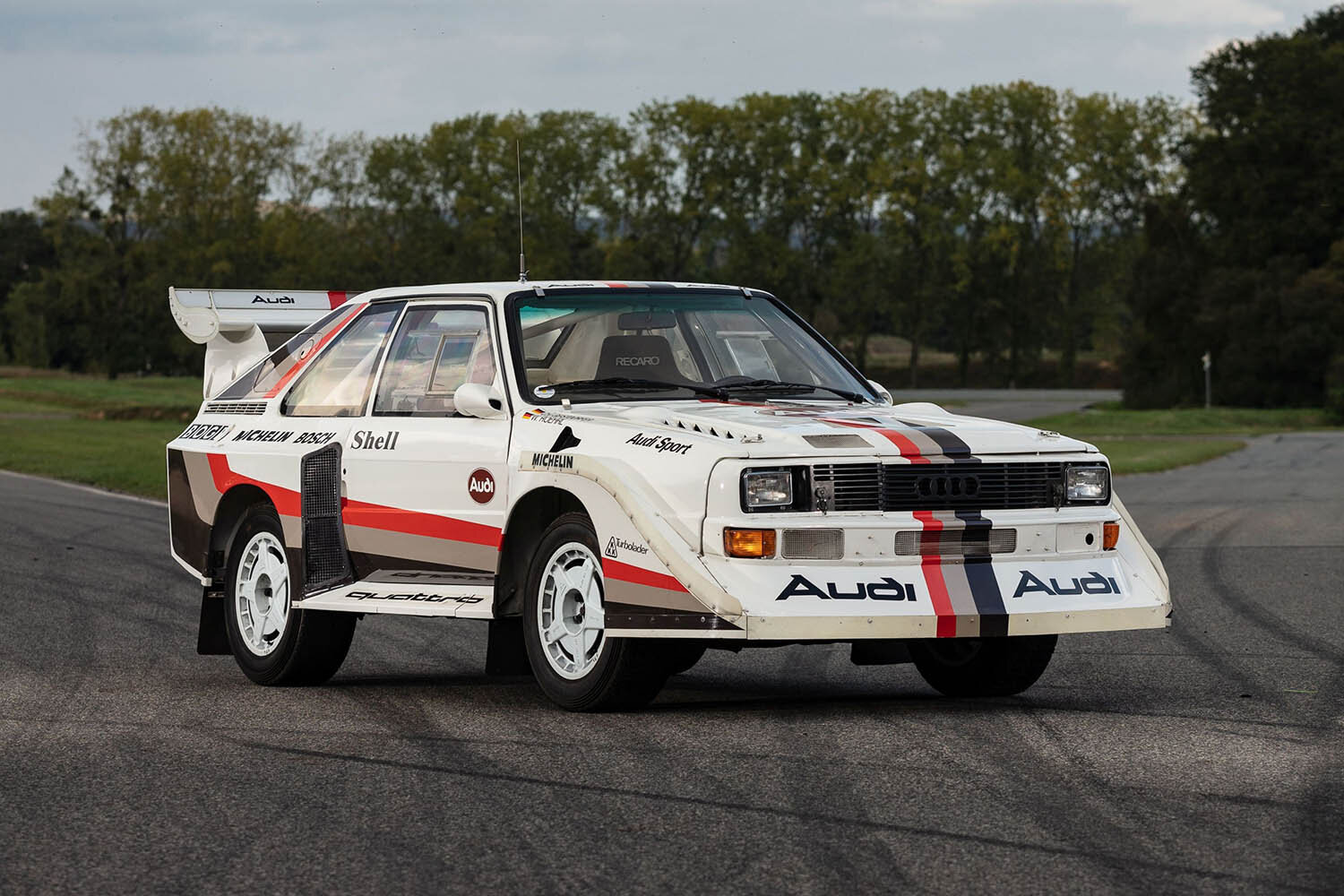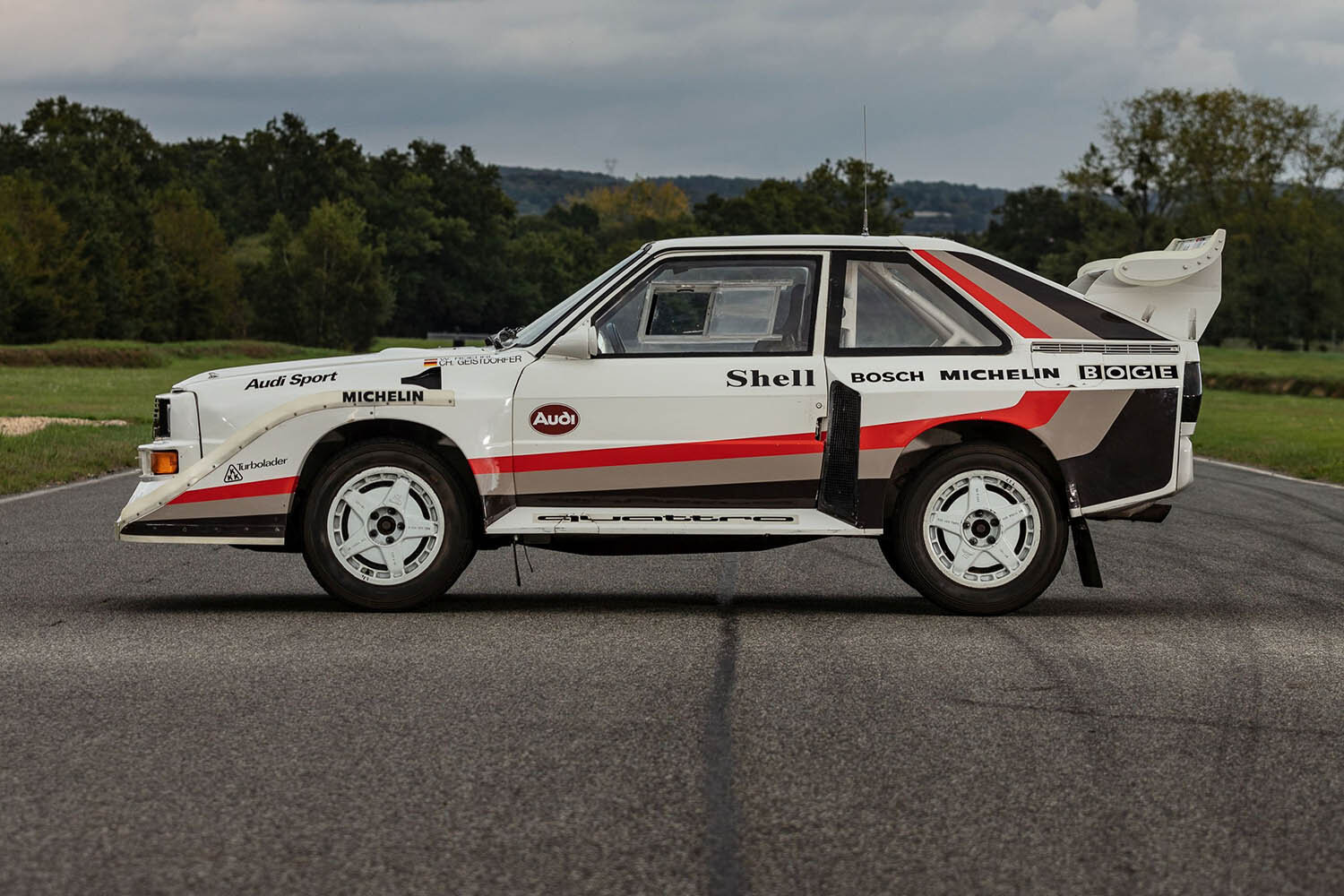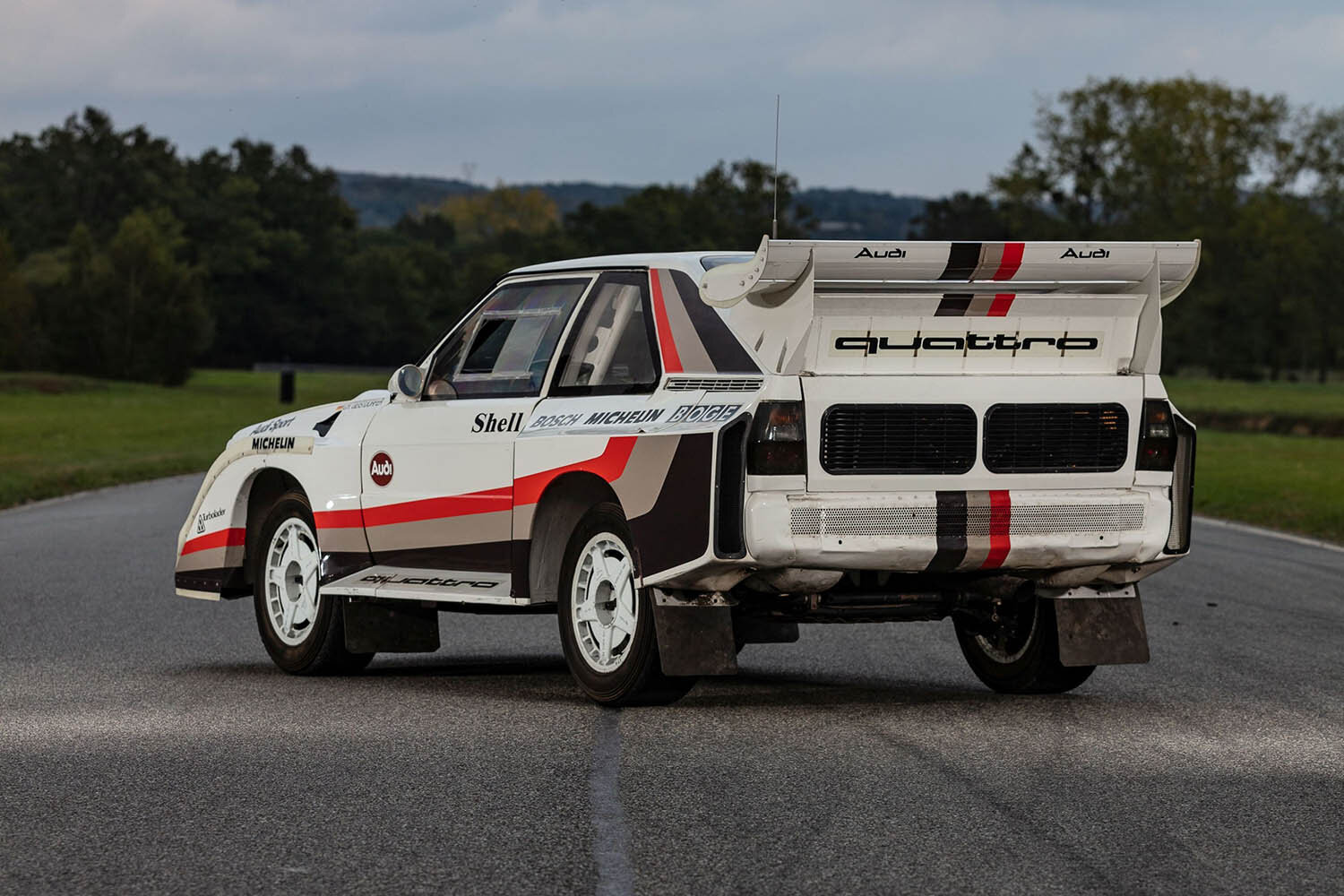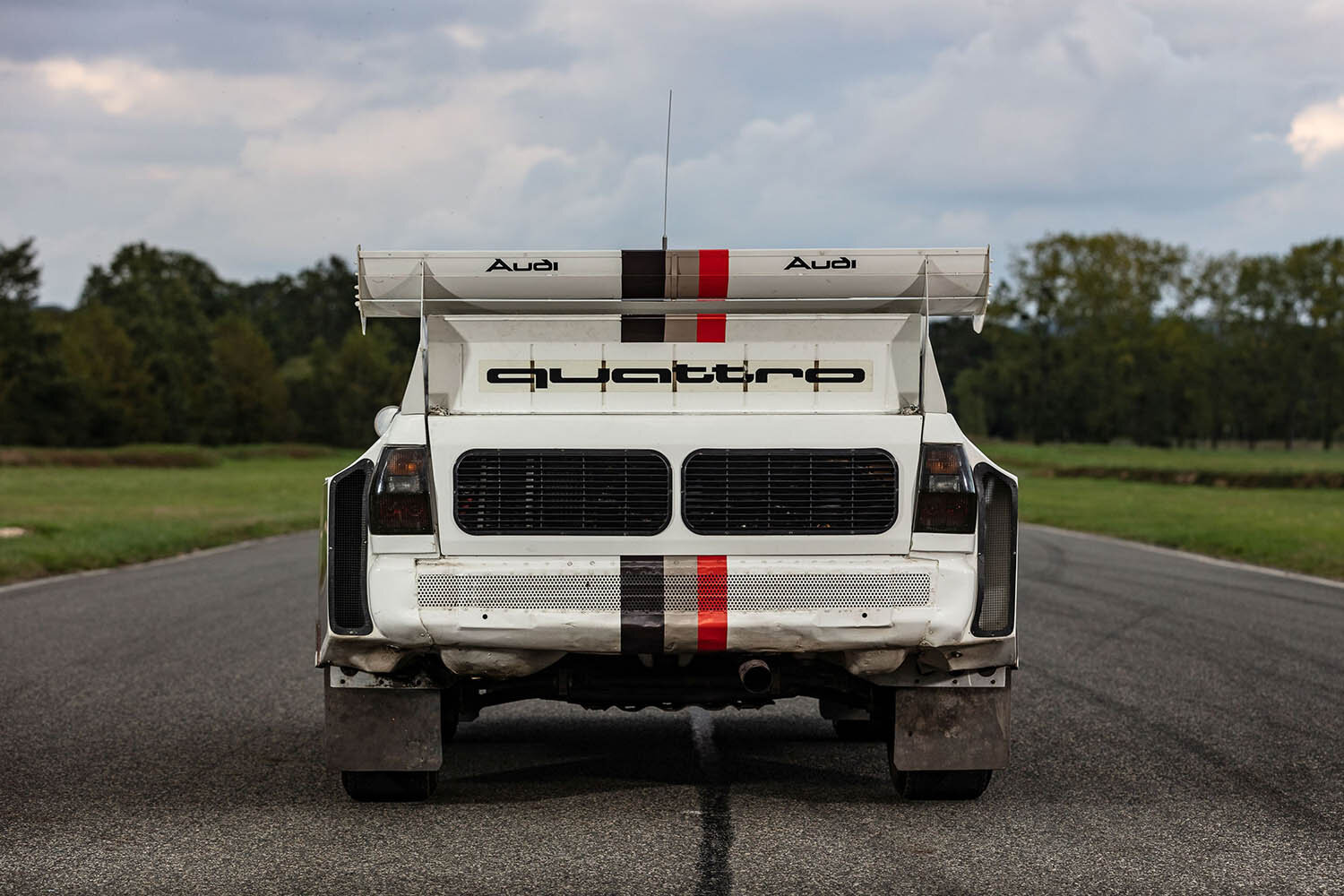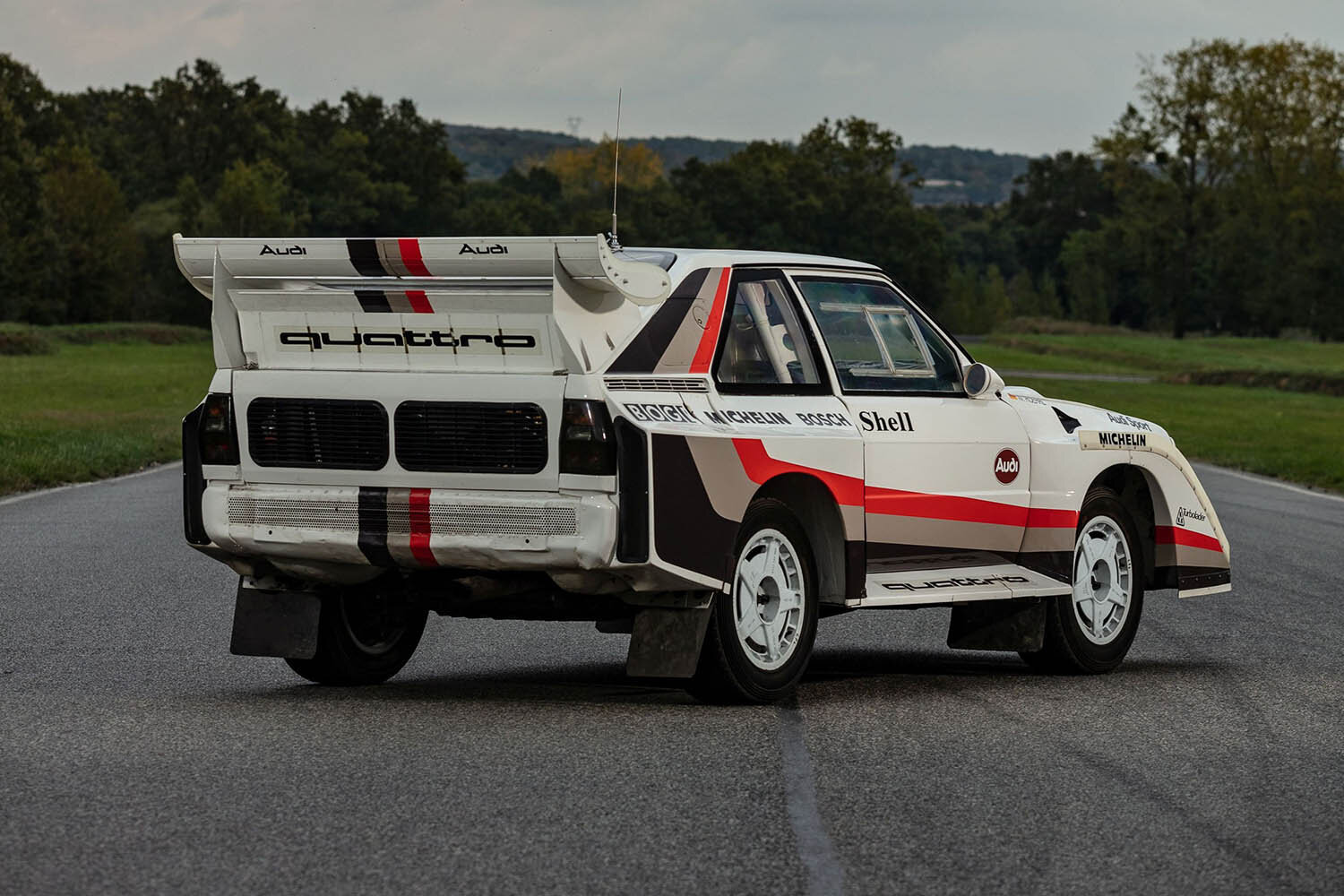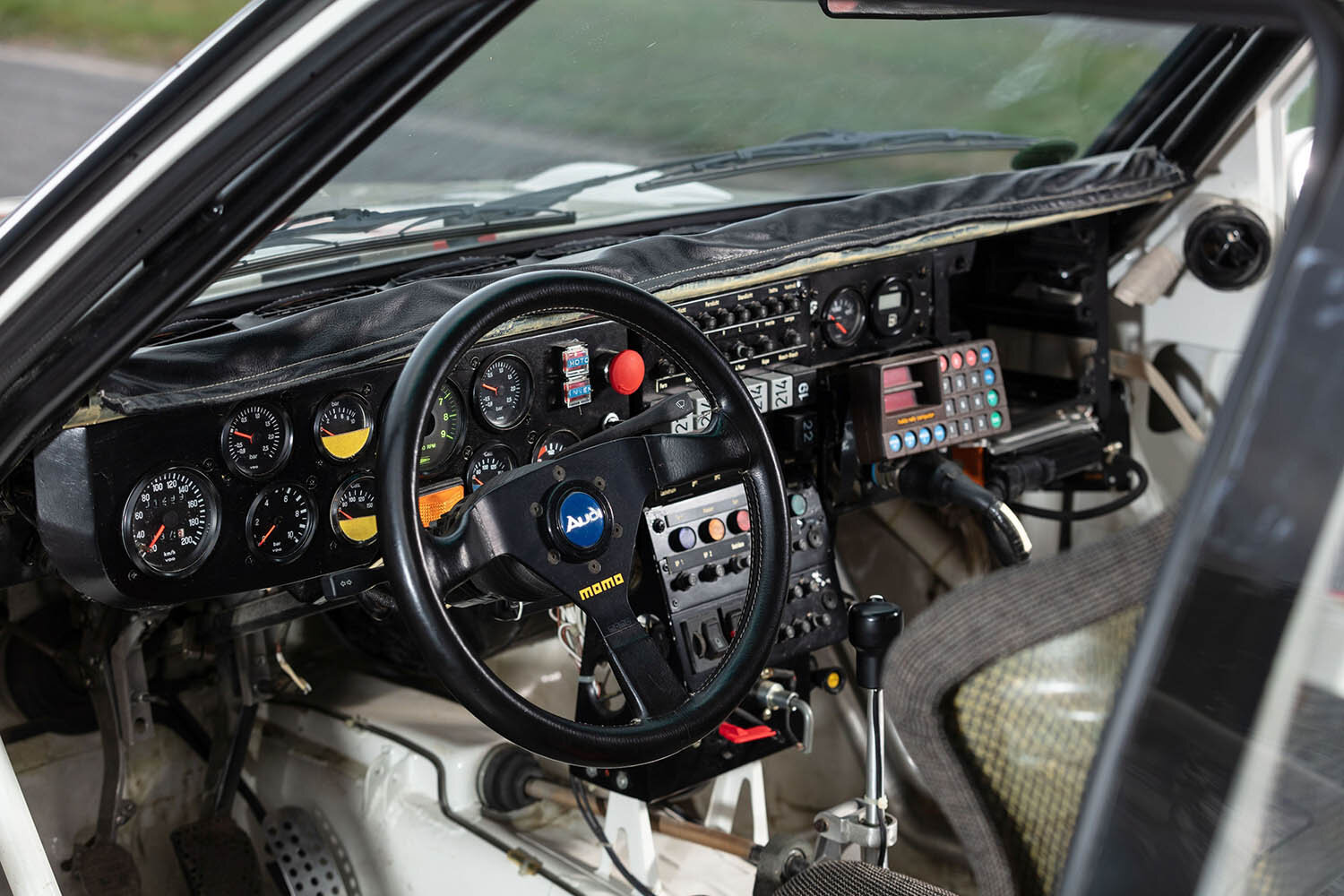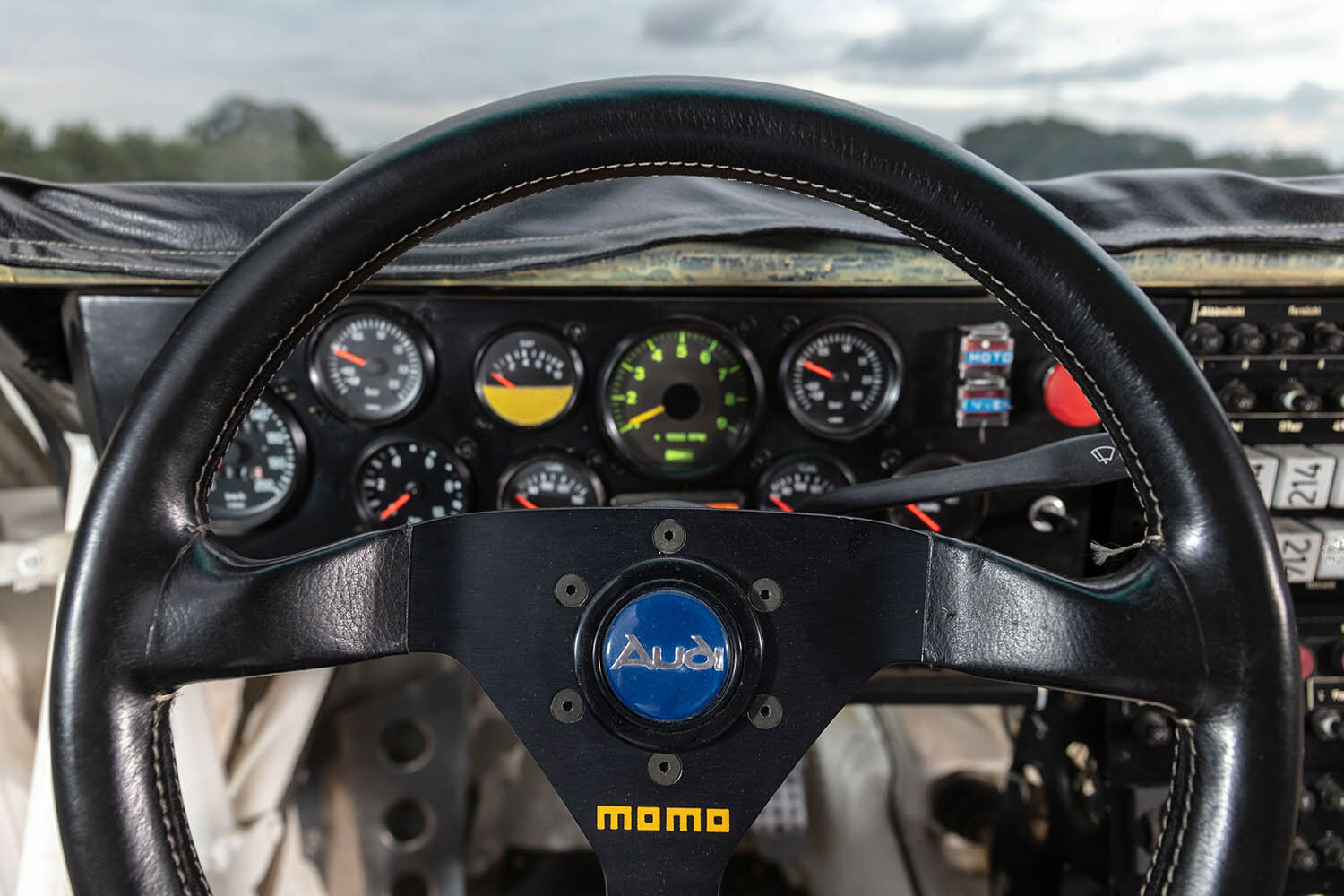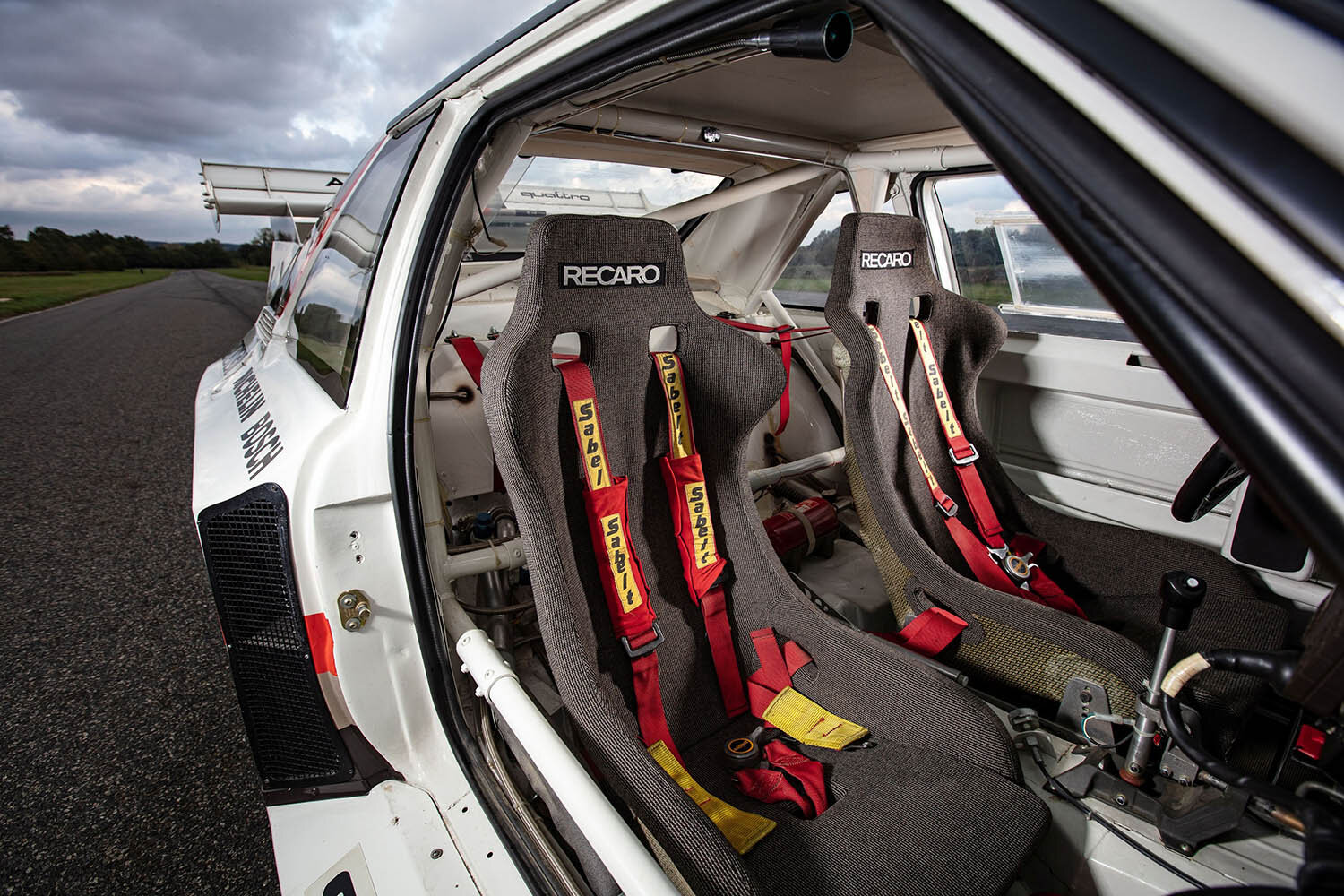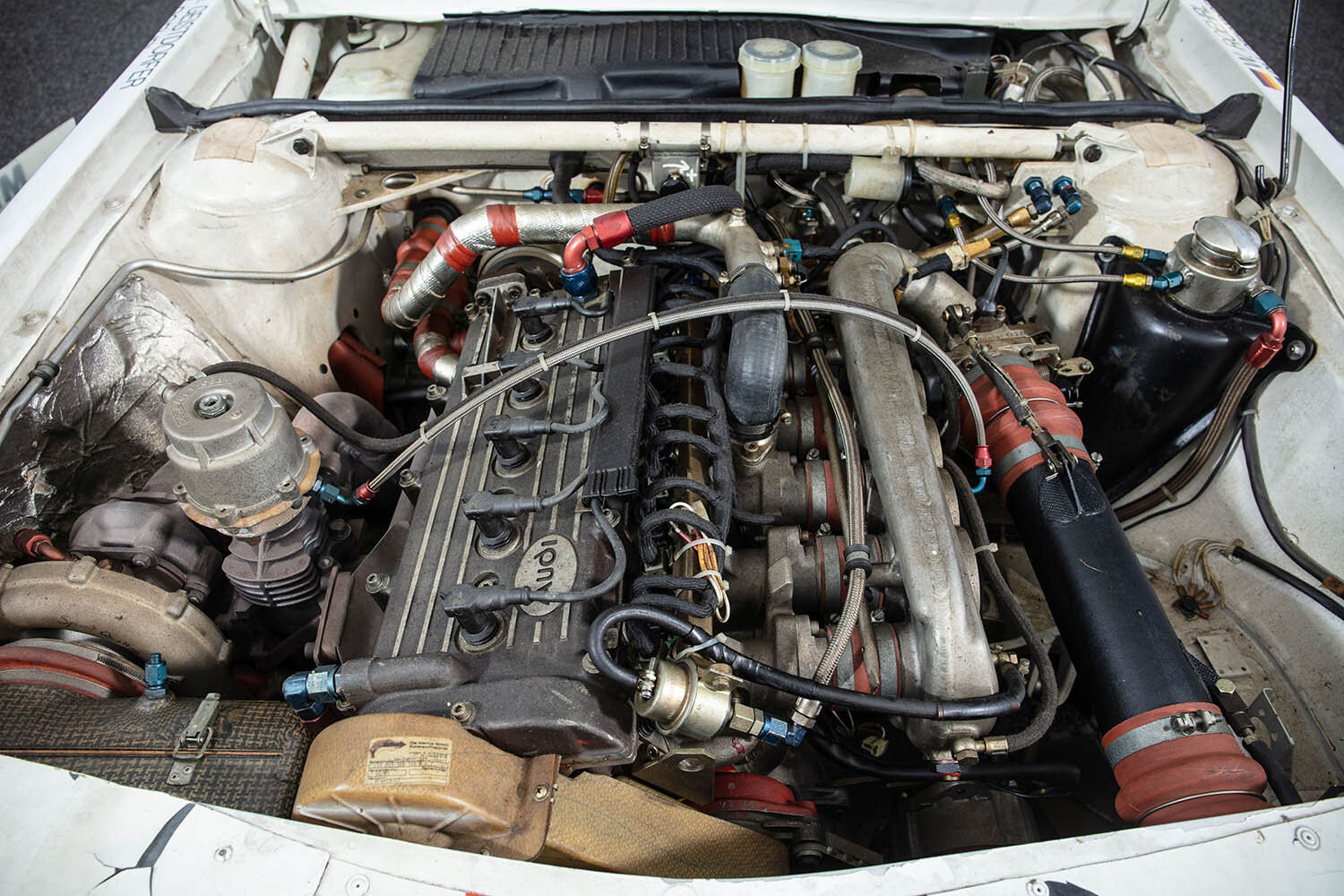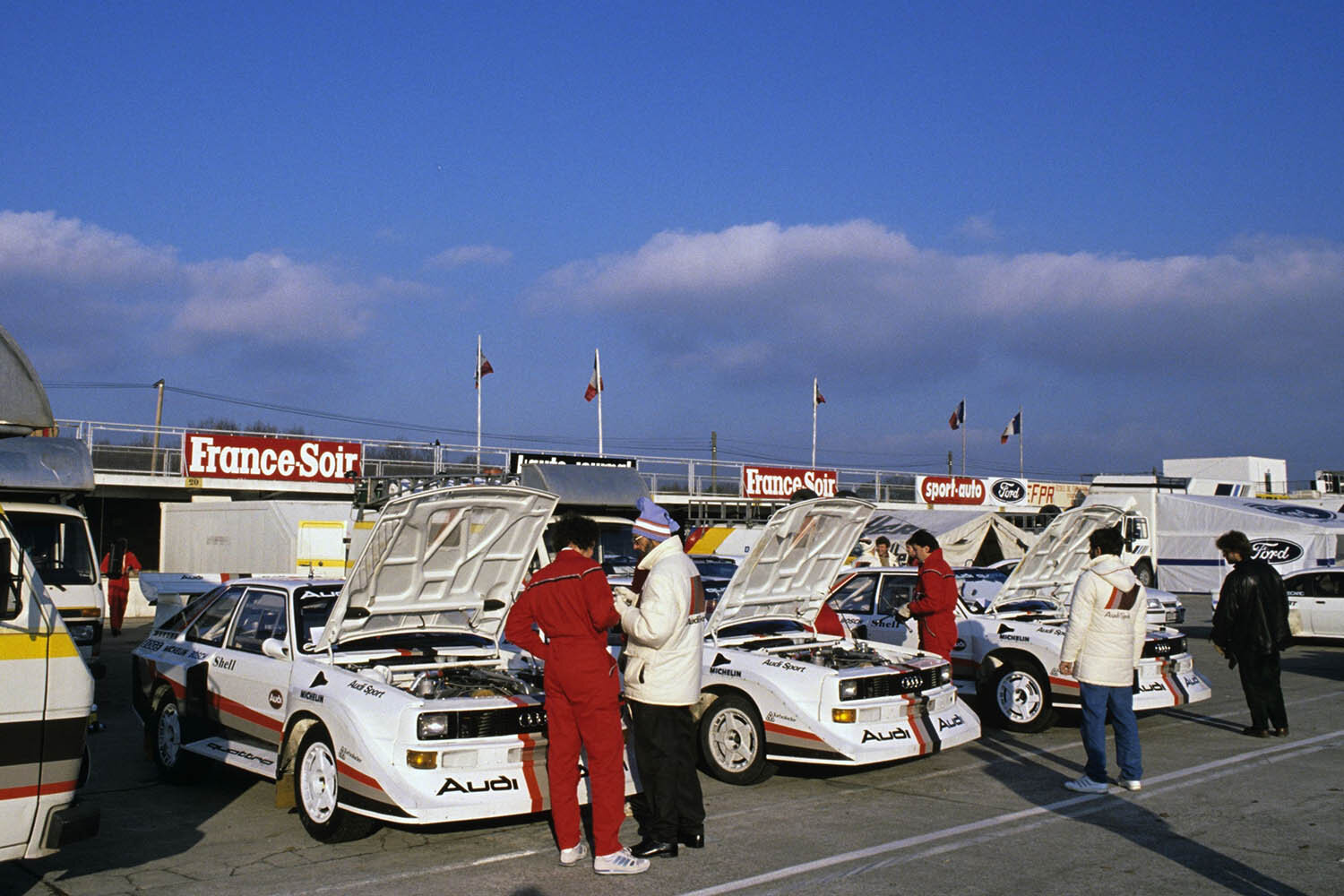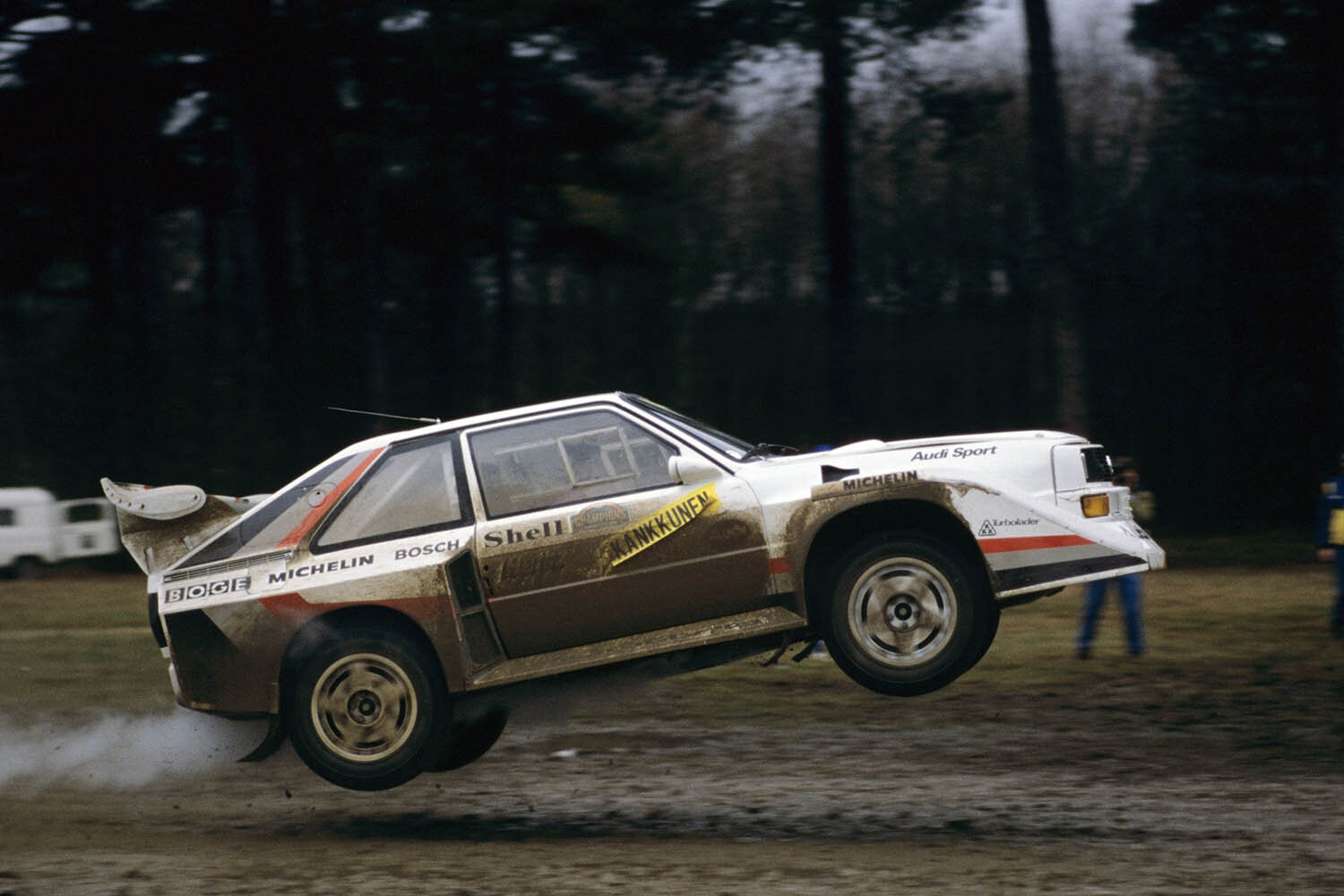The greatest monster of them all
"The greatest monster of them all!" was how Bruno Saby described the Audi Quattro. A monster for the infernal noise it made, its amazing performance and its brutal appearance, especially in its final version, its body hidden under sharp-edged spoilers and aggressive wheelarches.
It entered competition in 1981 with Walter Röhrl, Hannu Mikkola, Michèle Mouton and Stig Blomqvist making up the team of drivers. It proved formidably effective and demonstrated its superiority over the Renault 5 Turbos as soon as the Monte-Carlo Rally, even though it was forced to retire. It scored its first victory on the 1981 San Remo Rally with Michèle Mouton and dominated the 1982 season, winning the world title. That was still in the era of Group 4.
When Group B was introduced, Audi did two things. First, it modified the Group 4 version to allow it, simply by extending its homologation, to be entered in Group B as the Quattro A2. Secondly, it developed a true Group B car, the Quattro Sport, of which 200 homologation versions were built. It was shorter and several changes were made to save weight and increase its power, but Audi's rivals had time to react to the Quattro's four-wheel drive and now had their own cars which could compete with it. In reality, the German company's directors wanted the shape of their car to remain close to the production model. This forced them to keep the engine ahead of the front axle, a layout detrimental to the car's handling, which was unable to match the Lancia 037 or Peugeot 205 T16. Under the bonnet, the turbocharged 2.2-litre 20-valve DOHC engine was powerful, producing up to 400bhp, but was difficult to control as it had a narrow power band.
In 1984, Mouton came second at Pikes Peak with a special 500bhp version, but in rallying, the Quattro Sport struggled to achieve good results, and although Audi won the title again that year with Blomqvist, its victory was in part down to the Quattro A2.
In 1985, the Quattro Sport gained momentum but came up against the 205 Turbo 16, which won the championship for the first time, driven by Timo Salonen.
It was essential for Audi to develop the model further, and this it did with the Quattro Sport S1. This time, the engineers were given the green light to diverge from the production model, and they took full advantage of this. For this final version, they moved the engine back, relocated the radiators to the rear, modified the transmission and obtained a much better weight distribution of 52:48 front-to rear. Significant improvements were also made to the engine, which gained the flexibility it had lacked. The body was now fitted with an impressive aerodynamic kit to increase downforce and Audi once again had a car that could win. It went from 0-100kph in just 2.6sec and, according to Mikkola, "When you started off, you were thrust forward so brutally that you would have thought that a five-ton truck had crashed into the back of you at full tilt. The power was unheard-of." The car's first victory, achieved by Röhrl on the San Remo at the end of 1985, restored the team's confidence.
But the 1986 season promised to be difficult for Audi. Mouton and Blomqvist moved to other teams, leaving Mikkola and Röhrl on their own to defend its colours. They finished third and fourth in the Monte-Carlo Rally, behind Lancia and Peugeot, and after missing the Swedish event, returned for the Rallye de Portugal. But Joaquim Santos' tragic accident in his Ford RS200, which resulted in the death of three spectators, led to Audi's withdrawal from rallying.
The manufacturer nonetheless remained faithful to Pikes Peak, where the results were important in the North American market. After Mouton and Bobby Unser had won the event in turn in 1985 and 1986, Audi entered a Quattro Sport for Röhrl in 1987. For the 12.4 mile-long hill climb, known as "The Race to the Clouds" - which started at an altitude of 9400ft and finished at 14,124ft - Röhrl's car was undoubtedly the most extreme Quattro Sport S1 ever built. With 600bhp and a weight of 2200lb, a turbo system which ensured that the boost pressure never dropped off and spoilers everywhere, the car beat the record with a time of 10:47.85. Audi's honour was saved and the Quattro could retire from competition, leaving the memory of one of the most spectacular rally cars of all time.
This example, a 1988 Audi Sport Quattro S1, recently changed hands for just over €2m, the highest price paid for a rally car at auction. Photos © Peter Singhof


